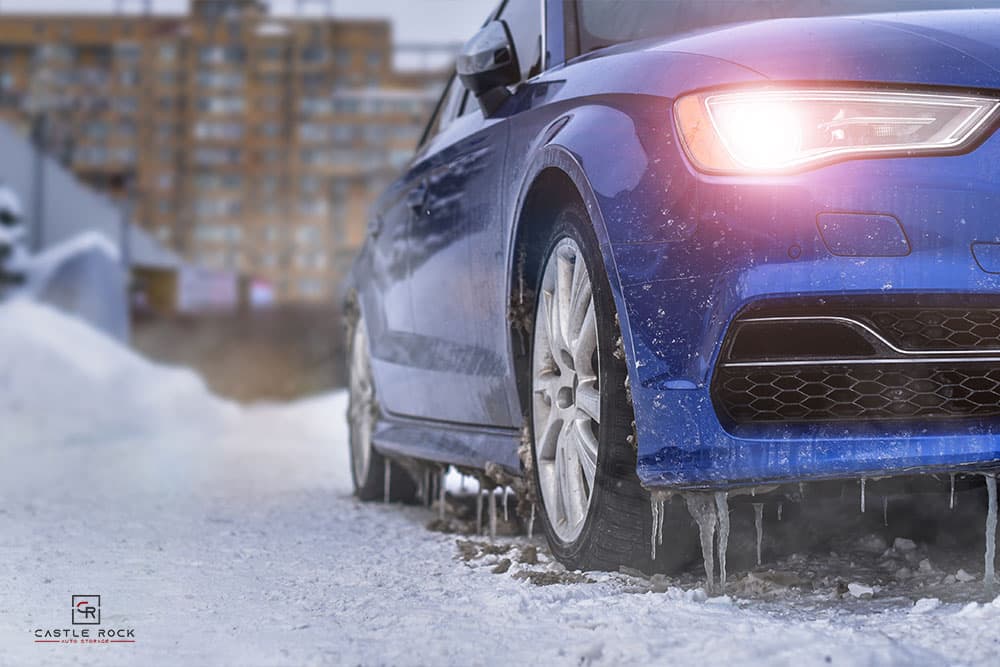Winter Storage for your Vehicles
Winter is coming….protect your vehicles

Don’t let this happen to your car
Colorado may be the greatest state in the country. We have the opportunity to enjoy nature and the world around us to a degree that others might only dream of. Colorado is a place with serious winters though, and not all vehicles are safe or convenient to drive when there’s snow and ice on the ground. Here’s 5 Ways to get your car ready to come in for the winter:
1. Start With the Details
The first step for storage prep is a good thorough cleaning of the interior, wipe down surfaces, clean the windows, vacuum, and dust. Obviously this is an oversimplification – detailing a vehicle can take a lot of time and effort – you may want to consider a professional detailing. In addition to simply cleaning, you will want to protect interior surfaces (dashboard, steering wheel, console etc) from UV exposure with a drop cloth or chemical product.
The undercarriage of your vehicle might be something you overlook prior to storage. Unless you are storing an exotic or show car you may be able to get away with hosing off your undercarriage and wheel wells. Be mindful though pressure washers and other high volume sprayers can damage seals and electrical components underneath your vehicle.
Aside from what’s under the hood, your vehicle’s paint job might be its most defining feature. Obviously you are going to want to take special care preparing the paint for long term storage. You will at least want a careful hand-wash and at least one coat of wax. Recently vinyl wraps have also come onto the market that will protect your paint, though they may need to be applied professionally.
2. Prep Your Fluids
Unless you have an electric vehicle, your engine runs on a myriad of fluids, all of which need to be properly maintained for long periods of storage. First and most obviously is the fuel tank. Whether you power your vehicle with gasoline or diesel you will want to top off your tank before storage. Empty space in the fuel tank will allow air and condensation to form – this is a bad thing as it can cause damage due to rust and moisture.
It’s recommended to use a commercial fuel stabilizer as well. If you are planning to store the vehicle for an extended period of time (several months or more) you will need to plan on draining the tank and disposing of the fuel before restarting your vehicle.
Change your oil before and after long term vehicle storage. Oil is arguably the most important fluid in the vehicle. Always change the oil prior to storage, and unless you are using a synthetic, plan on changing it again before you plan on using the vehicle at the end of storage.
The other fluids in your engine are generally not as critical as the fuel and oil. You may want to consult your mechanic, but generally hydraulic fluid and the cooling system are less critical, and while you may want to inspected them before storage they should be fine over an extended period of time. Obviously if you are going to store the vehicle outside of a climate controlled environment, you will need to service your radiator and coolant system in accordance with the vehicle manufacturer’s specifications.
3. Rubber meets the road – Keeping your tires in shape
Tires don’t get enough credit, they are the single most important part of any working vehicle. Tires take all the weight of your vehicle and everything literally rests on them. When you store any vehicle for an extended period of time the tires can get flat spots or worse. Ideally you should store your vehicle on jacks to keep the weight of the vehicle on the frame. If you don’t have the option to lift your vehicle prior to storage, you need to plan on rotating the tires every few weeks to keep your tires from becoming malformed. Obviously you should also check your tire pressure prior to storage – make sure they are filled to the manufacturer’s specifications.
4. Vermin and other critters NOT allowed
If you aren’t storing your vehicle in a monitored, climate controlled environment, it’s more than likely that you will have to deal with all manner of squirrels, pack rats, lizards, insects and other animals trying to get into both the cabin and engine of your stored vehicle. For starters, close all the vents inside your vehicle, it’s not a perfect solution, but it certainly can’t hurt. The engine, while complicated, is mostly a closed system. You should be able to safely close it off by sealing the intake (air filter) and exhaust. Obviously you will face unique challenges depending on the location of your stored vehicle, you may want to take extra precautions depending on your environment. Consider using commercial vermin traps or poison in the immediate area of your stored vehicle.
5. Cover me up

Winterize your vehicles
Once you’ve prepared your vehicle inside and out you’re pretty much ready to put it away. As always, the very best option is to store your vehicle indoors, in a climate controlled environment. Obviously indoor storage isn’t always an option for everyone, but at the very least you will want to protect your vehicle’s exterior from the harmful effects of UV and weather exposure. Purchase and install an all-weather, waterproof cover for your vehicle, it will save the paint and protect the glass and interior from all that nature can throw at you.
Whether it’s an exotic supercar, hand-built hot rod, or just an extra daily driver, if you follow the steps outlined above your vehicle will be ready to run when you are.
Call today to store your vehicle with Castle Rock Auto Storage! We’ll keep your car safe from the elements, and you safe from stress.


